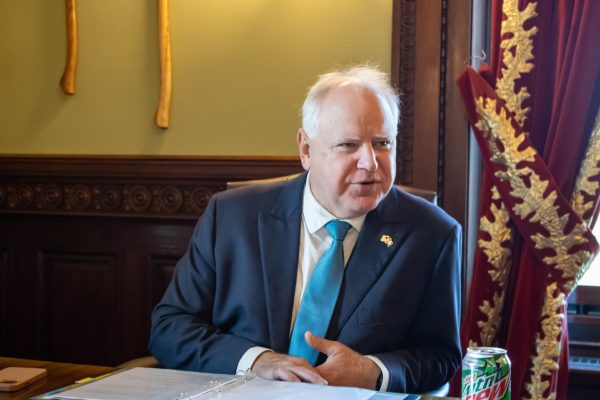Congress passed legislation Friday to prevent student loan interest rates from doubling, giving students another year before the scheduled increase.
The legislation will keep the interest rate for subsidized Stafford loans — need-based federal education loans generally awarded to low- and middle-income students — at 3.4 percent through June 30, 2013, when it is still set to double.
The automatic increase was approved by Congress five years ago when lawmakers signed off on a series of scheduled rate reductions.
The rate decreased from 6.8 percent to its current rate over a four year period starting in 2008.
“It’s very difficult to afford college right now, so you want to do everything you can to lift that burden, and that includes making the interest rates lower,” said Sen. Amy Klobuchar, D-Minn.
At the University of Minnesota, 13,600 undergraduate students received a total of $53 million in subsidized loans this year.
“The vast majority of our students are dependent on the subsidized and the unsubsidized direct student loan — it’s our main program,” Deb Pusari, associate director of financial aid in the Office of Student Finance, said.
The legislation, bundled with a highway bill that could save 2.8 million jobs, comes months before November elections, a time when politicians were hesitant to upset students and their families with higher interest rates.
“If you’re a student, I think it makes a difference in terms of long-term cost of going to school — that’s obviously why Congress acted,” said Arthur Rolnick, a senior fellow at the Humphrey School of Public Affairs.
Klobuchar met with students at the University and other colleges around the state to hear their perspective.
“We started raising the issue six months ago, but we were having trouble getting an agreement on it,” Klobuchar said. “Initially there was opposition, and it got less and less as students really made their voices heard.”
She said students signed petitions, rallied and met with individual members.
“I heard their stories, about how for so many of them this would be their tipping point,” Klobuchar said.
From 1982 to 2007, college tuition and fees rose 439 percent while the median family income increased 147 percent, according to a report from the National Center for Public Policy and Higher Education.
“Despite the fact that a college education is a lot more expensive now than it has ever been, the return on that investment is still very good,” Rolnick said.
He said students have to take out more loans than in the past, and the “sluggish” job market makes it more difficult to pay them off in the short-term.
In the long-term, however, he said a college education is well-worth the investment.
Creative advertising senior Brianna Hanson works three jobs and takes out loans in addition to her financial aid from grants. She currently has about $20,000 in loans and expects to graduate with $25,000 in loans.
Despite the financial burden, Hanson said college is “the most important investment” a person can make.
“It’s investing in yourself in the most necessary way possible,” she said.
Rolnick said college-educated students earn significantly more money on average than those with only a high school degree and during the recession experienced lower unemployment.
“That doesn’t mean it wasn’t difficult to find a job,” he said, “but relatively speaking college-educated [students] did better during the Great Recession.”
Hanson said she is somewhat worried about getting a job after graduation but wouldn’t lose sleep over it.
“I think it’s something everybody has to worry about, just because no one’s guaranteed anything,” Hanson said.
In 2010, 63 percent of graduates from the University of Minnesota had debt, according to the Project on Student Debt. The average University graduate owed $27,578.
“If we make it completely out of reach for them to get loans and pay back loans, then we have a problem,” Klobuchar said. “There are enough challenges that they face without having the interest rates doubled.”
The legislation will limit undergraduate federal subsidies to six years, saving $1.2 million. Subsidies, a period during which the government does not charge interest, can currently last as long as it takes an undergraduate to obtain a diploma.
The potential rate increase would have cost the average student an extra $1,000 over the decade it normally takes to repay the loan, affecting an estimated 7.4 million students.
“They’re out on their own, and they’re having to make their loan payments in addition to their home payments and starting up their new jobs,” Pusari said. “[The extra cost] can make a difference for students when they’re on a tight budget.”
Rolnick said he expects Congress will keep the interest rates low when the deadline rolls around next year.
“We were only able to get agreement for a one year extension, but that is certainly better than no extension at all, which is what we were facing,” Klobuchar said.”







